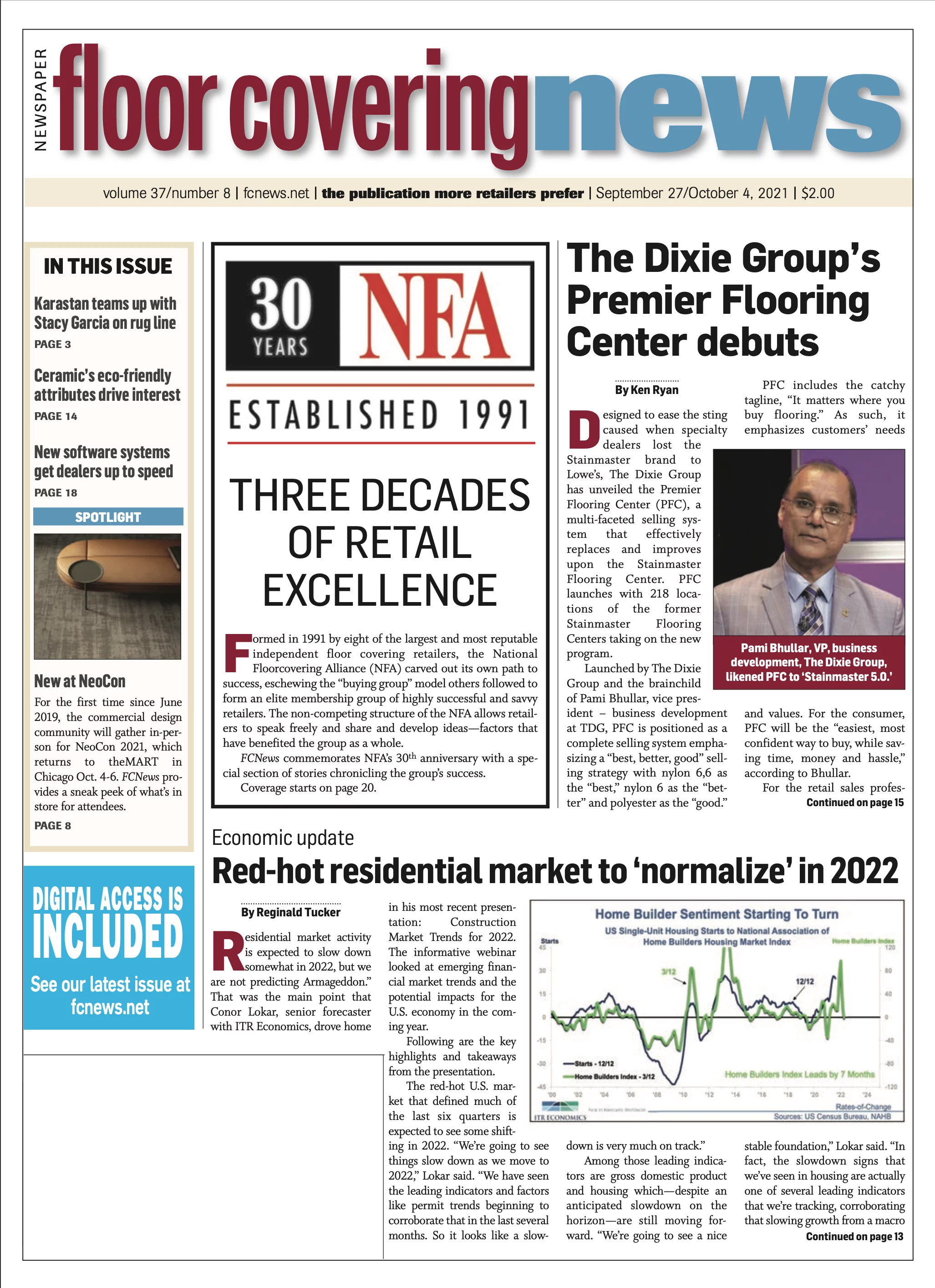 I know this is going to spark some controversy, but I have never been one to suppress my feelings. We’re a little more than 18 months removed since COVID-19 invaded our lives, our thoughts and our culture. This country initially embarked on initiatives to mitigate the spread of the virus, many of which proved successful—one of which was work from home.
I know this is going to spark some controversy, but I have never been one to suppress my feelings. We’re a little more than 18 months removed since COVID-19 invaded our lives, our thoughts and our culture. This country initially embarked on initiatives to mitigate the spread of the virus, many of which proved successful—one of which was work from home.
The flooring industry has been a tale of two cities: residentially, some retailers never missed a day in their stores. They are entrepreneurs, and they did whatever they could to keep their businesses running. They embraced customers, and they embraced the return to trade shows and gatherings. Surfaces 2022 is expecting its biggest turnout in years.
On the commercial side, many architects and designers, especially those in big cities, remain hiding under their beds, afraid that returning to work will be an express train to the cemetery. One company told me they’d be happy if NeoCon attendance was 40% of what it was pre-pandemic. Many firms continue to keep their doors closed, prolonging the work-from-home phenomenon. To them I say, “Get your employees back to work.” In fact, I say that to all the big companies in the big cities. You’re killing the economy.
I live in Manhattan, specifically on the Upper East Side. It’s a residential neighborhood. Much to my surprise, most restaurants and other small businesses have reopened, and those that have not have been replaced with new establishments. The area is thriving. In fact, some are doing better than they did pre-COVID-19 because they’ve been able to supplement their indoor tables with outdoor dining.
On the other hand, midtown Manhattan continues to struggle. The small businesses in that neighborhood are suffering or out of business because much of their clientele are the “bridges and tunnel” crowd that work in the locked-up offices. Eighteen months after the shutdown, so many people have yet to return. In some cases it’s the companies; in other cases it’s the people who got used to life without the time and expense of commuting, without getting dressed or showering in the morning, without having to say goodbye to Fido. This under the guise of fear of returning to the office.
Companies say they won’t order employees back to their desks until it’s safe from COVID-19, but for some employees—like the loudmouth teacher unions—it will never be safe enough. So here’s some gentle advice I’m tempted to give the millions of work-from- homers who won’t go back to their offices because they say they’re afraid of COVID-19: Get off your butts and go back to the office! You’re collecting 100% of your salary. You are obliged to perform 100% of the work. Not 75%, with the remaining time devoted to your kids, your cat and the latest 64-part Hulu or Netflix series.
But it isn’t that simple, of course. I get that work from home isn’t just about the joys of a laptop-and-kombucha lifestyle. It has legitimate advantages, like saving hours every day on commut- ing, which (at least in theory) allows us to be more productive. Think about how liberating it must be to anyone faced with a daily two-hour schlep on commuter trains or on the road. Let’s get real. Offices—especially where staff is vaccinated and safety protocols are in place—are much less crowded than subways, restaurants, theaters and stores.
Here in New York, the actual risk of a vaccinated person contracting the virus on any given day is between one in 5,000 and one in 10,000. A lightning strike offers a greater chance of killing them. The risk is surely even less inside an office where there are more rules than in the fine print of a Lotto card.
If work-from-homers truly feared getting sick on the job, they would even more diligently avoid densely packed restaurants where unmasked strangers breathe in their faces. The proof that fewer people than you think are really worried about office safety is that our restaurants fill up earlier in the evening than in the past. Guess why? It’s easier and more natural to eat at 6 p.m. or 7 p.m. than at 8 p.m. or 9 p.m. when you’re not coming from the office. Many of these people who eat out early and often have not been to their desks or cubicles much since March 2020.
Some work-from-homers swear they can’t wait to go back to the office—how they miss the camaraderie, the shared intensity, the desirable co-workers they’re not allowed to flirt with anymore. But if they were truly desperate to get out of the house, they’d be clamoring for their bosses to bring them back.
No such clamor has been detected.

